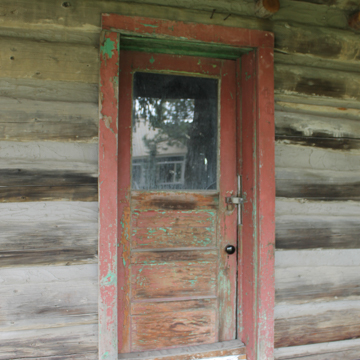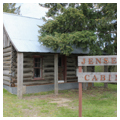In 1883, Nez “Cayuse” Jensen built the first permanent structure in Roslyn, a one-room cabin, approximately four blocks northeast of Roslyn’s commercial center. Jensen, along with his neighbor, John Stone, made a living mining deposits of coal with a pick and shovel and transporting them via pony and buckboard to Ellensburg blacksmiths.
Jensen’s cabin is of log-and-chink construction with a roof gable covered originally with wood shingles. The house remained a residence until the 1970s. By the late 1990s, the cabin had become unstable and leaned to the south. The City of Roslyn purchased the cabin in 1995 to preserve it as a reminder of Roslyn’s settlement period. Assisted by a $5,000 grant from the federally funded Preservation Works for Washington Historic Rehabilitation Program, in 2001 the city began a reconstruction with the help of volunteer labor. The process involved dismantling the original cabin, numbering the original logs, pouring a new concrete foundation, and re-erecting the original structure. Later additions and alterations were removed to present an interpretation of the original house.










